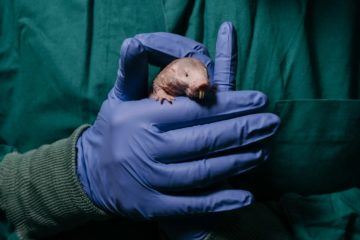Emily Anthes in The New York Times:
 The naked mole rat may not be much to look at, but it has much to say. The wrinkled, whiskered rodents, which live, like many ants do, in large, underground colonies, have an elaborate vocal repertoire. They whistle, trill and twitter; grunt, hiccup and hiss. And when two of the voluble rats meet in a dark tunnel, they exchange a standard salutation. “They’ll make a soft chirp, and then a repeating soft chirp,” said Alison Barker, a neuroscientist at the Max Planck Institute for Brain Research, in Germany. “They have a little conversation.” Hidden in this everyday exchange is a wealth of social information, Dr. Barker and her colleagues discovered when they used machine-learning algorithms to analyze 36,000 soft chirps recorded in seven mole rat colonies.
The naked mole rat may not be much to look at, but it has much to say. The wrinkled, whiskered rodents, which live, like many ants do, in large, underground colonies, have an elaborate vocal repertoire. They whistle, trill and twitter; grunt, hiccup and hiss. And when two of the voluble rats meet in a dark tunnel, they exchange a standard salutation. “They’ll make a soft chirp, and then a repeating soft chirp,” said Alison Barker, a neuroscientist at the Max Planck Institute for Brain Research, in Germany. “They have a little conversation.” Hidden in this everyday exchange is a wealth of social information, Dr. Barker and her colleagues discovered when they used machine-learning algorithms to analyze 36,000 soft chirps recorded in seven mole rat colonies.
Not only did each mole rat have its own vocal signature, but each colony had its own distinct dialect, which was passed down, culturally, over generations. During times of social instability — as in the weeks after a colony’s queen was violently deposed — these cohesive dialects fell apart. When a new queen began her reign, a new dialect appeared to take hold. “The greeting call, which I thought was going to be pretty basic, turned out to be incredibly complicated,” said Dr. Barker, who is now studying the many other sounds the rodents make. “Machine-learning kind of transformed my research.”
More here.
